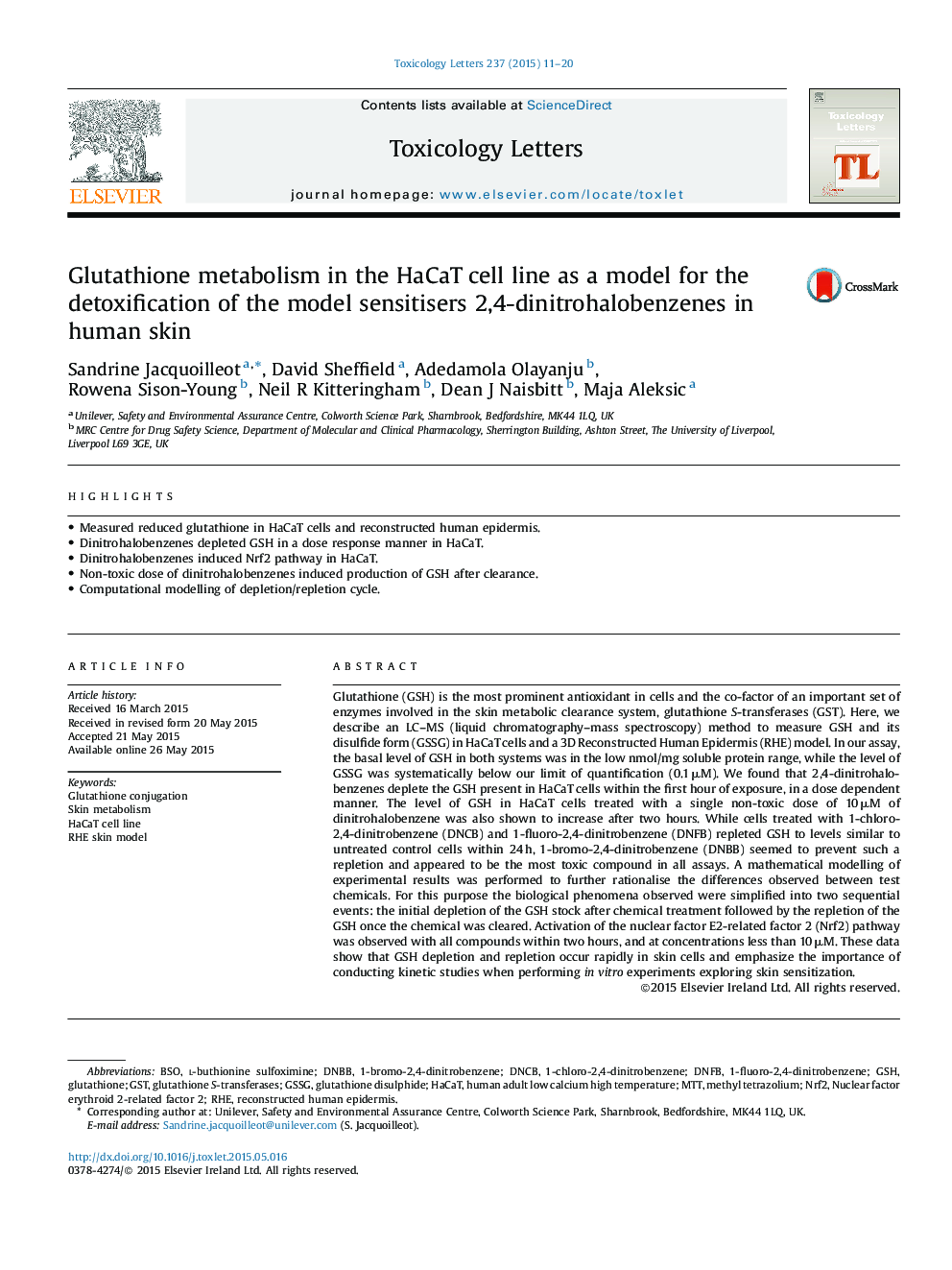| کد مقاله | کد نشریه | سال انتشار | مقاله انگلیسی | نسخه تمام متن |
|---|---|---|---|---|
| 2598855 | 1133154 | 2015 | 10 صفحه PDF | دانلود رایگان |

• Measured reduced glutathione in HaCaT cells and reconstructed human epidermis.
• Dinitrohalobenzenes depleted GSH in a dose response manner in HaCaT.
• Dinitrohalobenzenes induced Nrf2 pathway in HaCaT.
• Non-toxic dose of dinitrohalobenzenes induced production of GSH after clearance.
• Computational modelling of depletion/repletion cycle.
Glutathione (GSH) is the most prominent antioxidant in cells and the co-factor of an important set of enzymes involved in the skin metabolic clearance system, glutathione S-transferases (GST). Here, we describe an LC–MS (liquid chromatography–mass spectroscopy) method to measure GSH and its disulfide form (GSSG) in HaCaT cells and a 3D Reconstructed Human Epidermis (RHE) model. In our assay, the basal level of GSH in both systems was in the low nmol/mg soluble protein range, while the level of GSSG was systematically below our limit of quantification (0.1 μM). We found that 2,4-dinitrohalobenzenes deplete the GSH present in HaCaT cells within the first hour of exposure, in a dose dependent manner. The level of GSH in HaCaT cells treated with a single non-toxic dose of 10 μM of dinitrohalobenzene was also shown to increase after two hours. While cells treated with 1-chloro-2,4-dinitrobenzene (DNCB) and 1-fluoro-2,4-dinitrobenzene (DNFB) repleted GSH to levels similar to untreated control cells within 24 h, 1-bromo-2,4-dinitrobenzene (DNBB) seemed to prevent such a repletion and appeared to be the most toxic compound in all assays. A mathematical modelling of experimental results was performed to further rationalise the differences observed between test chemicals. For this purpose the biological phenomena observed were simplified into two sequential events: the initial depletion of the GSH stock after chemical treatment followed by the repletion of the GSH once the chemical was cleared. Activation of the nuclear factor E2-related factor 2 (Nrf2) pathway was observed with all compounds within two hours, and at concentrations less than 10 μM. These data show that GSH depletion and repletion occur rapidly in skin cells and emphasize the importance of conducting kinetic studies when performing in vitro experiments exploring skin sensitization.
Journal: Toxicology Letters - Volume 237, Issue 1, 19 August 2015, Pages 11–20